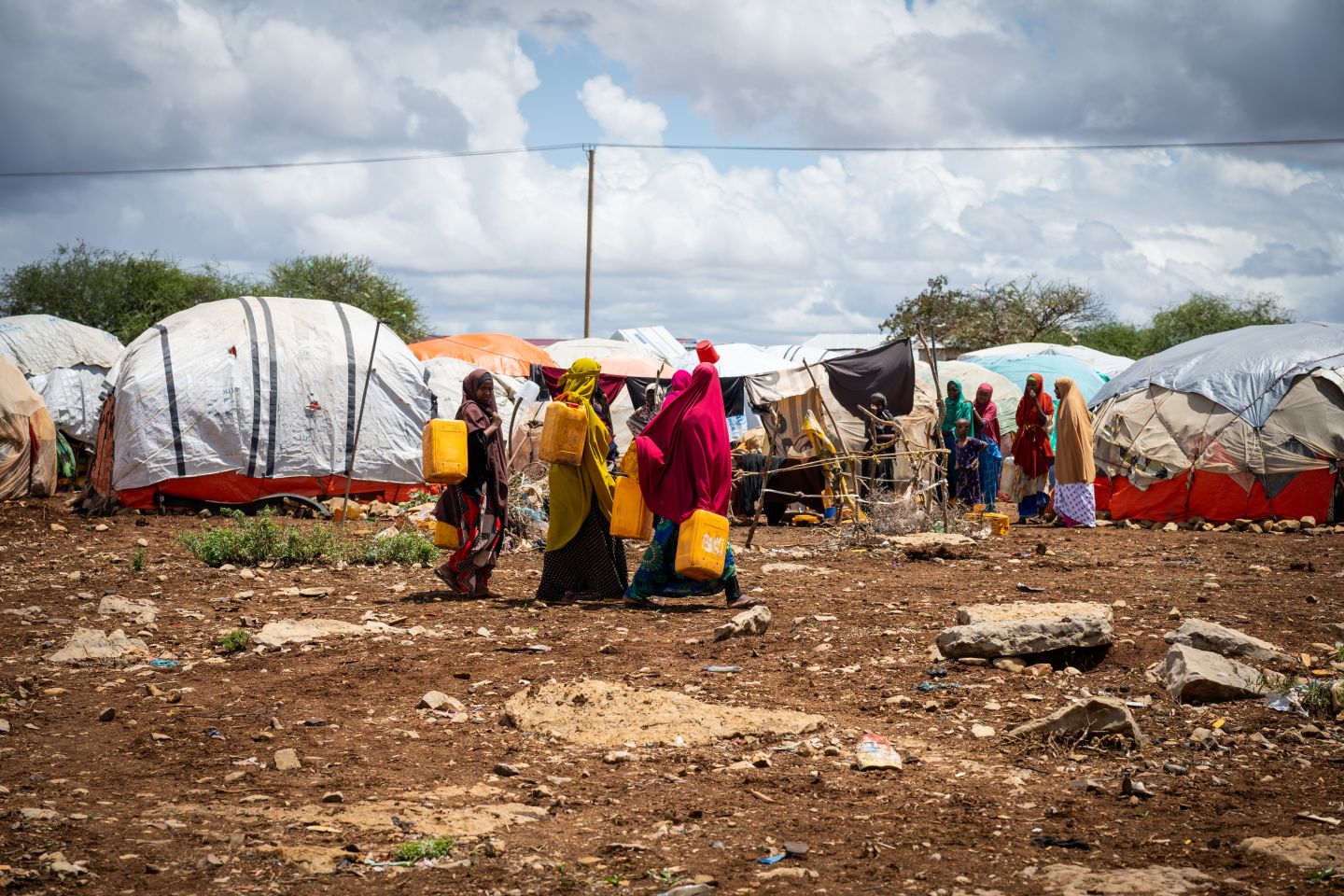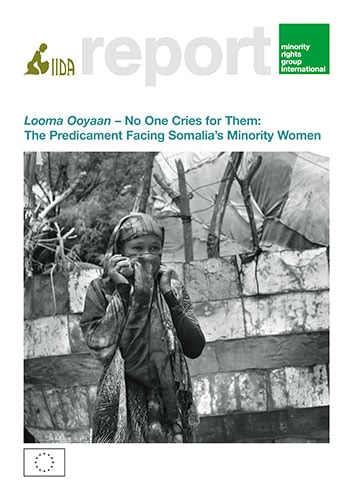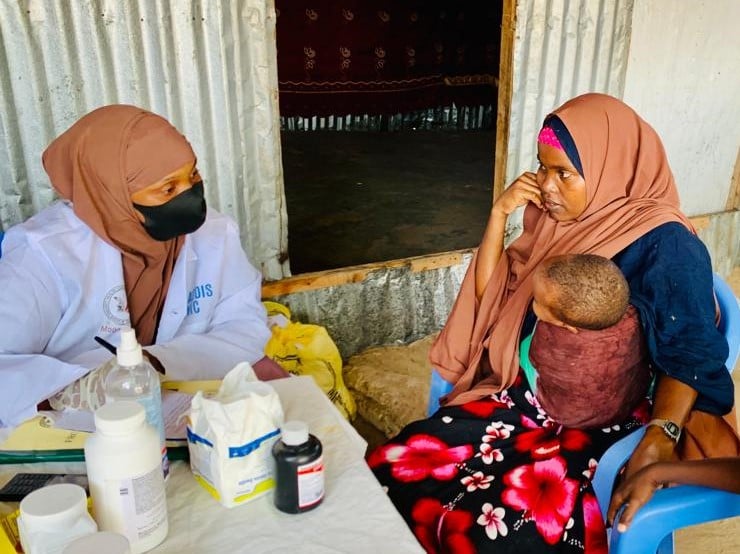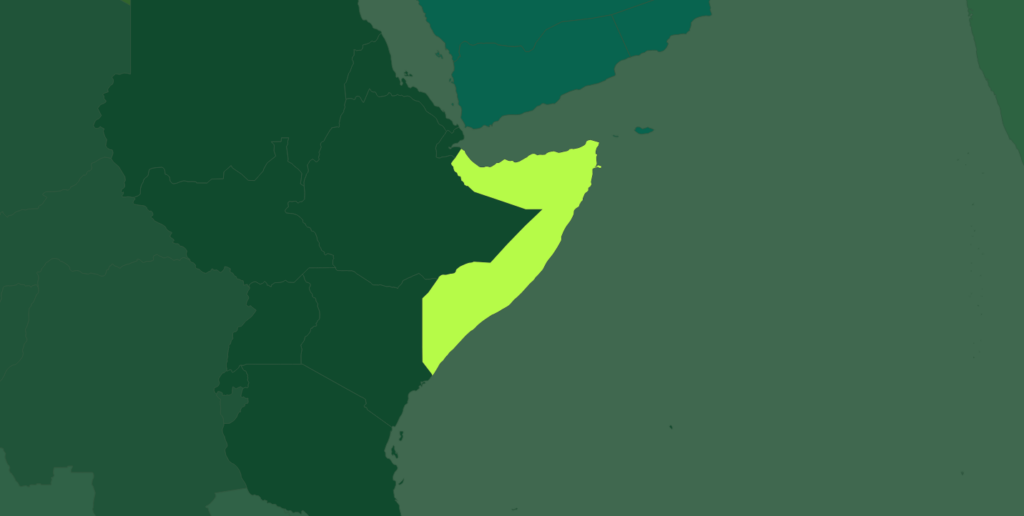Bantu in Somalia
Profile
Bantu groups have two different histories in Somalia. The groups collectively known as (Wa) Gosha (literally, ‘people of the forest’; or Reer Goleed) primarily live in the Juba Valley area, although a number have been displaced to other areas by famine, floods and conflict. Other Bantu communities are located in the Shebelle River Valley. Gosha in Jubaland have a more recent history, compared to the Bantu autochthons in the Shabelle River area, and are principally a non-ethnic Somali minority group in the country. Gosha speak a Bantu language and are often referred to as – and call themselves – Bantu.
Bantu have retained many separate cultural traditions and characteristics which date back to different earlier historical periods. These traditions have merged into new social formations in Somalia. The name ‘Bantu’ derives from a late 20th century recognition of their Black African origin, appearance, cultural heritage and language. They were traditionally incorporated as inferiors into Somali clans and lineages.
Historical context
Most Bantu, especially the segments along the Shebelle River Valley, are remote descendants of early indigenous farming communities pre-dating pastoralist migration into southern Somalia and are historically distinct from the other cluster of Bantu, forming separate communities in the 19th century known as Gosha. Although slavery had long been practiced in the area, contemporary Bantu society, especially those who are predominantly settled in the Juba Valley, originated partly in the influx of hundreds of thousands of enslaved Africans as a result of the nineteenth century Arab slave trade.
Bantu slaves were put to work as unpaid labourers on southern agricultural farms that exported items like sorghum and sesame oil to the Middle East and elsewhere. They also worked as domestic servants, concubines and artisans. Some were attached to local Somali family groups, though many lived in separate Bantu settlements.
Most Wa Gosha Bantu were held under a coerced slavery relationship until the Italian colonial authorities in the south (then known as Italian Somaliland) intervened, leading to final legal abolition and emancipation in 1903. Large numbers escaped to form fugitive ex-slave communities deep in the inter-riverine forests of the Juba Valley; these became known as Gosha (‘people of the forest’). Many escaped and freed slaves were originally from regions that today are countries such as Malawi, Tanzania and Zimbabwe. They managed to retain their autonomy to a considerable degree and some of their original socio-cultural institutions and languages, for example from Zigua, Yao, Nyasa, Makoa, Ngindu and Nyika societies. They migrated to forest areas to join indigenous Bantu groups who were already settled in the Juba Valley area prior to the arrival of Somali pastoral communities. Most of these indigenous Bantu became mingled with the new migrants who became known as Wa Gosha. Those freed slaves remaining behind in the original landing areas along the Benadir coast were given no compensation for being enslaved, and many continued to work for their former owners, sometimes still in slavery-like conditions. Others managed to live by farming independently in separate Bantu villages. In the 1930s, Bantu were subjected to a new colonial forced labour law obliging them to work for long periods on Italian settler plantations with minimal or no payment.
As elsewhere in Somali society, pastoralist clans and an agricultural ethnic Somali clan group Rahanweyn, provided ‘protection’ in an institutionalized form of bonded incorporation (sheegat in Somali) into local clan segments. Bantu worked for their ‘patron’ (abban) without payment in return for subsistence and basic social needs. They thus gained customary law (xeer) protection from their patrons. Females were however sexually exploited. Rape of Bantu girls and women was commonly perpetrated by clan members with impunity, in contrast to the punishments for rape of clan females – although that punishment generally concerned the exchange of goods or herds between male clan leaders. Clans customarily prohibited intermarriage with Bantu, although concubinage was not uncommon.
After the army coup overthrowing the multi-party civilian government in 1969, economic changes provided new opportunities to Bantu linked to agricultural development and trade. Anti-discrimination measures (now defunct following state collapse) under President Siad Barre’s rule opened up state education and employment and gave some social recognition and limited political representation to some minorities, particularly the non-Bantu minorities. While continuing to do work and practice crafts rejected by pastoralists, urban Bantus developed new skills within their communities and moved into many modern artisan occupations, notably in engineering (such as repairing vehicles or boats), manufacturing, carpentry, woodcarving, building, masonry and house painting.
However, discrimination remained widespread, perpetuating their poverty. Bantu experienced a wave of extensive land loss as a result of the Siad Barre government’s 1975 land registration law, which nationalized all land. Bantu were rarely able to document their customary land holdings, and government-connected clan members seized or were allocated farmland in return for little or no payment. Many Bantu were dispossessed without any legal redress or protection. Bantu were forced to work, regularly without pay, for new and often absentee landlords.
The 1980s were characterized by new political mobilization by Bantu. The previously derogatory term of Jareer (‘hard-hair’, referring to their African ancestry) as used for Bantu by ‘nobles’, who called themselves Jileec (‘soft’ or wavy hair, signifying Arab descent), was adopted positively by Bantu themselves as the preferred Somali-language term of self-description. In the 1990s, with a new international presence in Somalia, the term Bantu gained wider currency and became an equally acceptable ascription alongside Jareer.
In the 1990s, during the civil war following state collapse, warlords such as General Mohamed Aideed (who fought US forces in Mogadishu in 1993), occupied southern regions with their clan-based faction militias, and perpetuated land grabbing, killings, forced displacement and forced labour. The horrendous 1992 famine in southern Somalia particularly affected Bantu and Rahanweyn in the Baidoa area. A UN humanitarian operation, UNOSOM, was launched, but the UN withdrew in 1995, with little having been achieved in terms of re-establishing peace, disarming factions, rebuilding central and regional government or the justice system, solving the humanitarian crisis or securing respect for human rights. Civilians of all clans suffered abuses at the hands of warlord militias, and customary minority protections from majority clans disappeared.
Bantu suffered particularly from armed factions which were systematically looting and abusing civilians, as they fought to control farmland and urban areas in the south. Bantu were also often denied famine assistance by dominant clans. Thousands of Bantu were internally displaced or fled to Kenya. Up to now, Bantu have rarely been able to reclaim land stolen either by Italian settlers, members of the civilian and military regimes, or pastoralist militias who came and occupied Bantu land in the 1990s.
Current issues
Bantu communities continue to face discrimination, including verbal abuse by members of minority clans: Bantu people are still referred to as addoon, a derogative Somali term for ‘slave’. Al-Shabaab has also targeted Bantu communities because of their religious and cultural practices, and in January 2010 the National Somali Bantu Project (NSBP) reported that several Bantu people were killed for attending a traditional service in the Lower Juba region. The NSBP also reported the desecration of Bantu graves and forced compliance of Bantu Sheikhs with al-Shabaab doctrines, as well as numerous cultural attacks on Bantu dancing, the use of traditional medicines and the imposition of linguistic stipulations, including being forced to adopt Arabic names. Al-Shabaab has also reportedly recruited Bantu children as young as 10 into their militia.
Like other minorities, Bantu people face renewed discrimination in IDP camps, with numerous cases of rape of Bantu women, who are not protected by traditional clan structures in the camps.
Bantu communities have limited access to political representation (see 4.5 formula section) and face many barriers in terms of achieving rights or alleviating poverty. Bantu languages are poorly recognized in Somalia, and almost no government services or humanitarian aid providers have the ability to interact with those who speak these languages when they do not also speak Maay or Mahatiri.
In a rare exception to the general trend, a Bantu man, Shegow Ahmed Ali, achieved the status of General in the Somali armed forces after defecting from al-Shabaab. In events which are disputed by many in the Bantu community, he was accused of military crimes and fled the country. In autumn 2023, the Somali government announced a new military initiative, Operation Black Lion, which was intended to regain control over a wide swathe of territory currently occupied by or influenced by al-Shabaab, including the Bantu traditional homelands. This prompted fears among Bantu communities that they would be forced to vacate their lands as conflict raged and the land would then be occupied by major clan militias and their allies. Returning to Somalia in late 2023, General Shegow offered his support for the operation, citing his ability to influence local Bantu communities to assist the government offensive. However, a clash between his team and police, in which 4 people died, resulted in his arrest and subsequent conviction in a military court to 10 years in prison.
Updated November 2024
£15/month
Related content
Latest
-

25 October 2022
Minority exclusion in Somalia: shortcomings of aid agency feedback mechanisms
In 2021, MRG research revealed that minority clan members in Somalia were less likely to be aware of, to trust and to use the feedback…
-

20 March 2007
Somalia tops list of countries where minorities most under threat
Somalia is the world’s most dangerous country for minority communities and has overtaken Iraq to top a global ranking of countries…
Reports and briefings
View all-
30 January 2015
Looma Ooyaan – No one cries for them: the situation facing Somalia’s minority women
After decades of violence and instability, tentative progress is being made in Somalia to strengthen the country’s governance and…
-
23 November 2010
No Redress: Somalia’s Forgotten Minorities
This report documents the neglected situation of Somalia’s minorities. It aims to raise awareness of the continuing severe violations…
-
12 December 2008
A double bind: The exclusion of Pastoralist women in the East and Horn of Africa
Pastoralism is one of the predominant livelihoods in eastern Africa and the Horn. But pastoralist societies are increasingly excluded and…
Technical guidance
Partner publications
-
1 June 2021
A Survey Report on how the marginalized communities in IDP sites in Mogadishu and Kismayo perceive their exclusion
This Survey was conducted by the Marginalized Communities Advocates – Network (MCA-N) with support from UNHCR targeting a population…
Digital reports
-

20 June 2023
Somalia: The impact of poor sanitation and improper waste disposal on the health of minority IDPs in Baidoa
Most of the families or households living in the IDP camps in Baidoa have long been faced with inadequate sanitation services.
-
Our strategy
We work with ethnic, religious and linguistic minorities, and indigenous peoples to secure their rights and promote understanding between communities.
-
-






